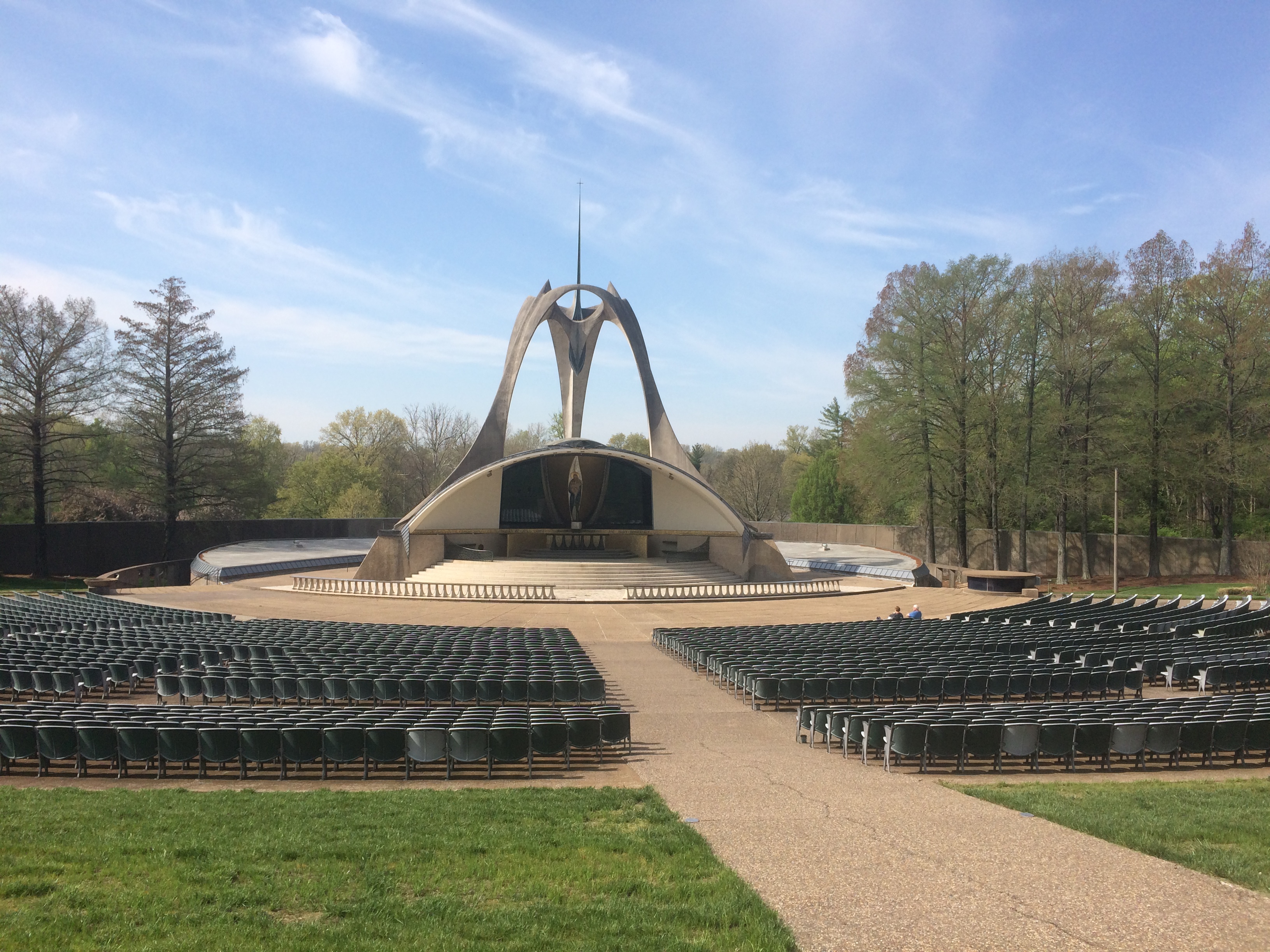I spent the first 24 hours of my recent trip, as well as the last 18 hours or so, in southern Illinois. Not far from Carbondale, in Shawnee National Forest, is Pomona Natural Bridge, which is the first place I went after a drive down from metro Chicago.

The official trail is a short loop from the parking lot to the natural bridge.

The trail goes over the top of the bridge.

Which looks like this from another angle. You can climb steps down to under the bridge, and that’s what I did.

Though a short trail, the drop to under the bridge is a little steep, and I navigated it carefully, testing my new hiking shoes and walking stick in the field. They proved useful.
The road to the natural bridge passes some farms, complete with an array of rusting equipment, available any time for spare parts.

This building, forgotten by time, stood next to a crossroads.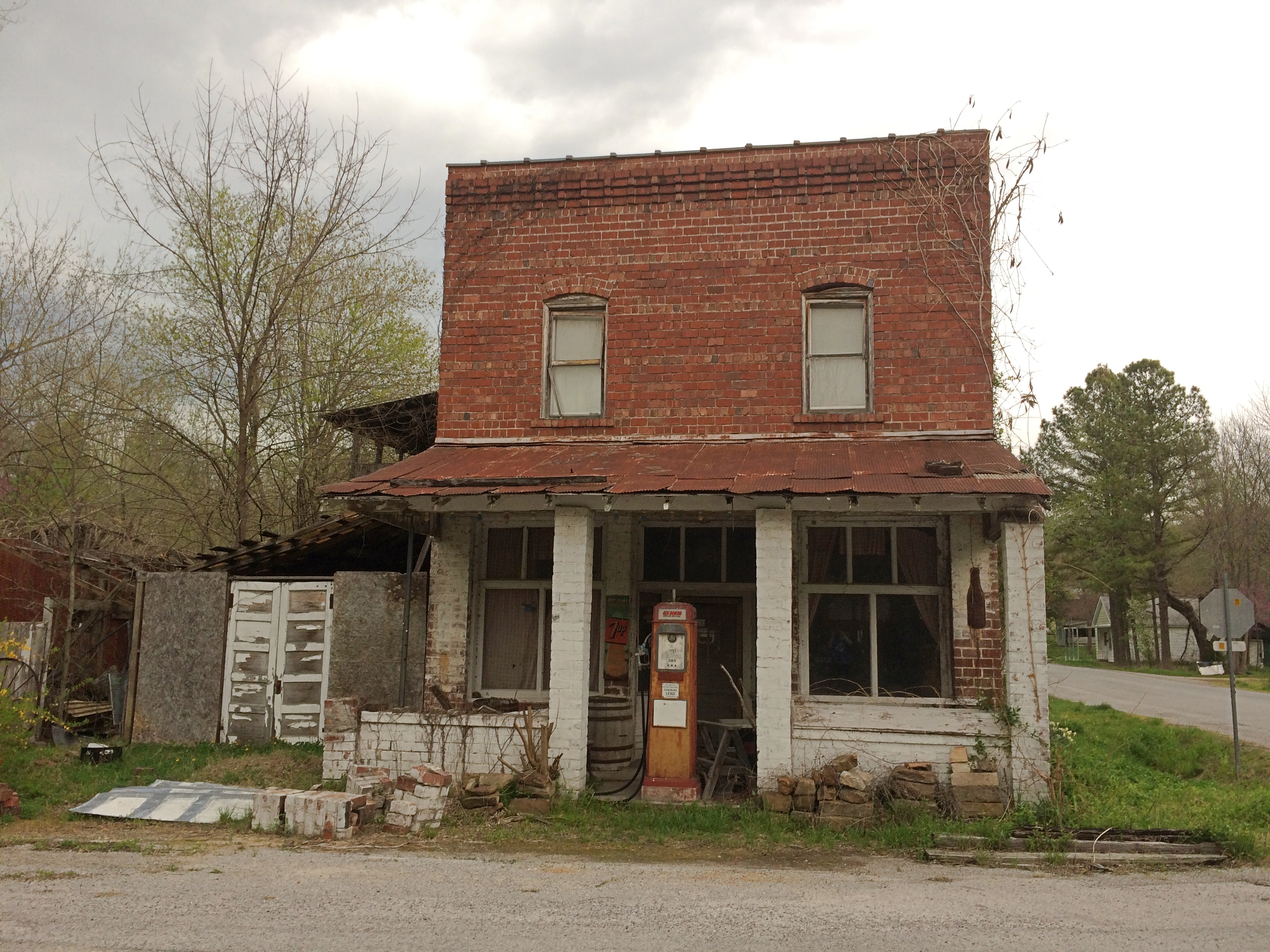

The next morning, April 10, I drove south, eventually passing through the ruin that is Cairo, Illinois, pop. 2,000 or so, a town that never became St. Louis or Cincinnati or even Cape Girardeau or Quincy, despite its location. One hundred years ago, more than 15,000 people lived there.
Sure, it’s still technically a functioning municipality, and the houses off the main street show that people still call Cairo home, but the main street was like a little piece of the early ’80s Bronx had landed here in low-lying southern Illinois: a parade of empty lots, rubble, recently burned structures, and otherwise vacant buildings, with a scattering of intact buildings, mostly part of one level of government or another, including the handsome public library. Mine was the only moving car, and I saw only two pedestrians.
I acquainted myself with a number of small towns on this trip, also including New Madrid, Mo., Clarksdale and Vicksburg, Miss., Paris, Tex., Van Buren, Ark., and Belleville, Ill., all at least a little more prosperous than the forlorn Cairo.
At the confluence of the Ohio and Mississippi rivers is the 191-acre Fort Defiance State Park, known as Camp Defiance during the war. When I passed by, the park was closed by high water. Too bad. I wanted to see the confluence.
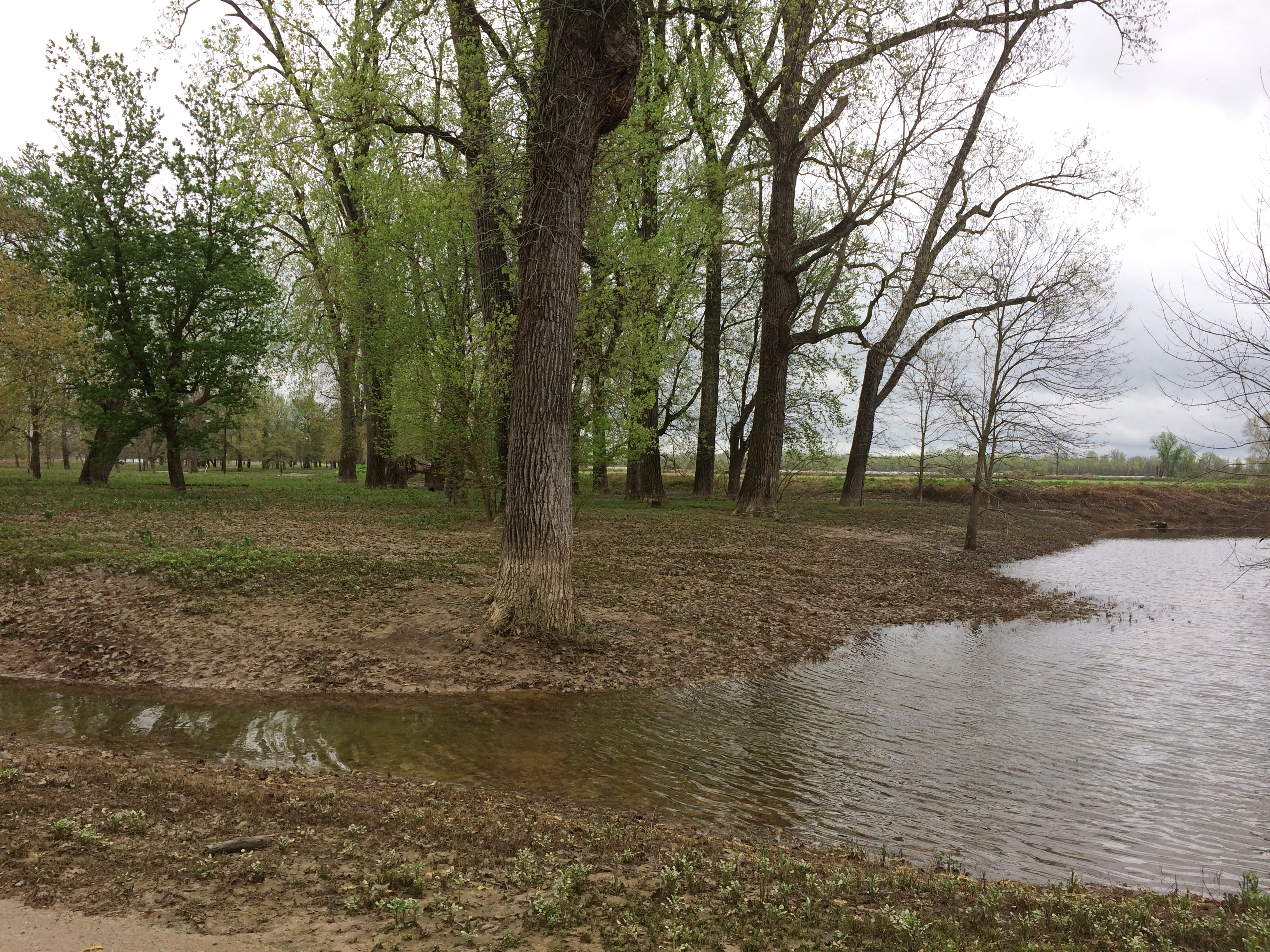

On the night of April 17, I arrived in Belleville, my last stop before returning home. The next morning I strolled along the town’s well-to-do main street, which is populated by restaurants, one-off retailers, and law and other professional offices. No one else was around.
Before leaving town, I stopped at the Cathedral of St. Peter.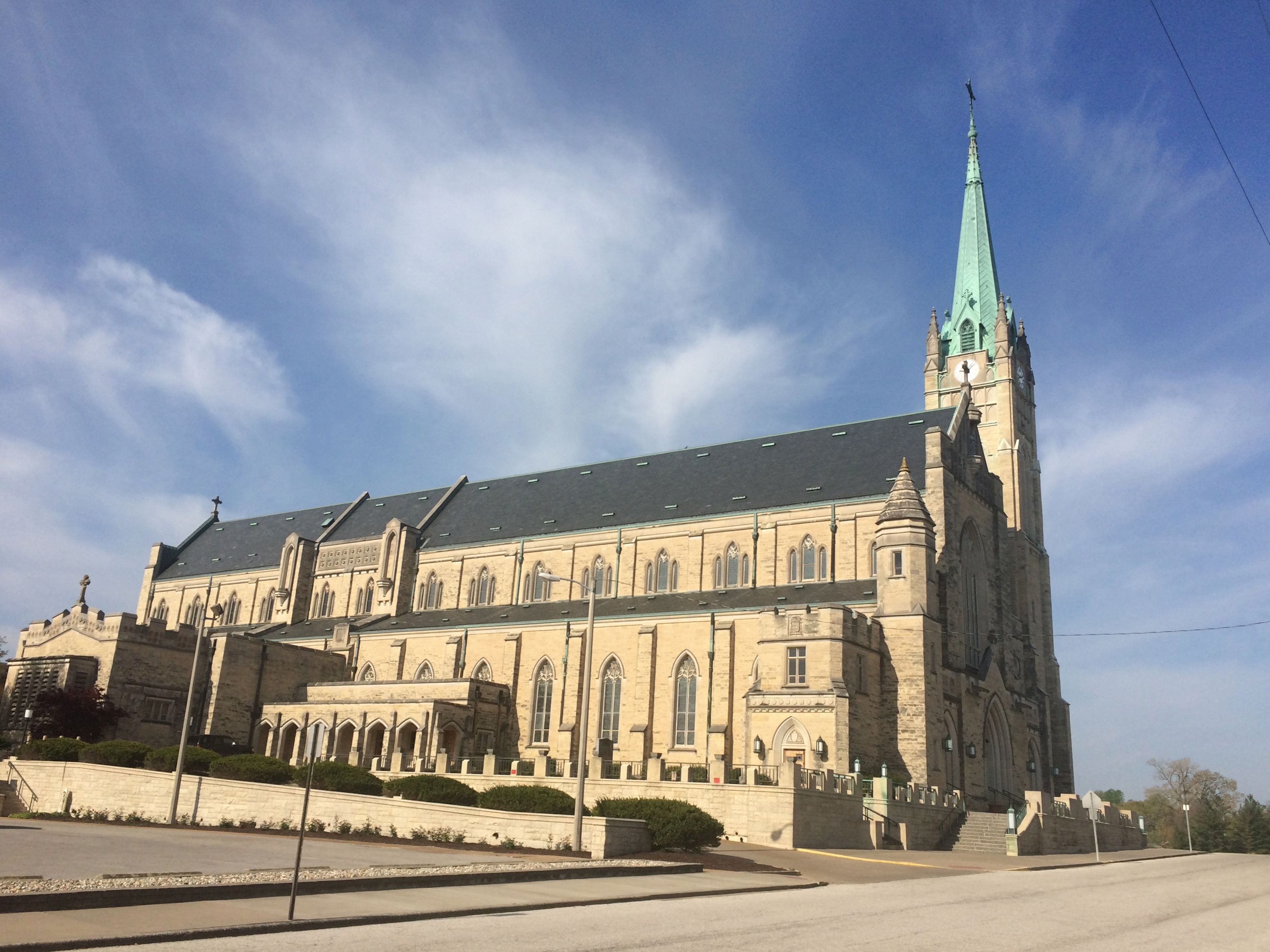
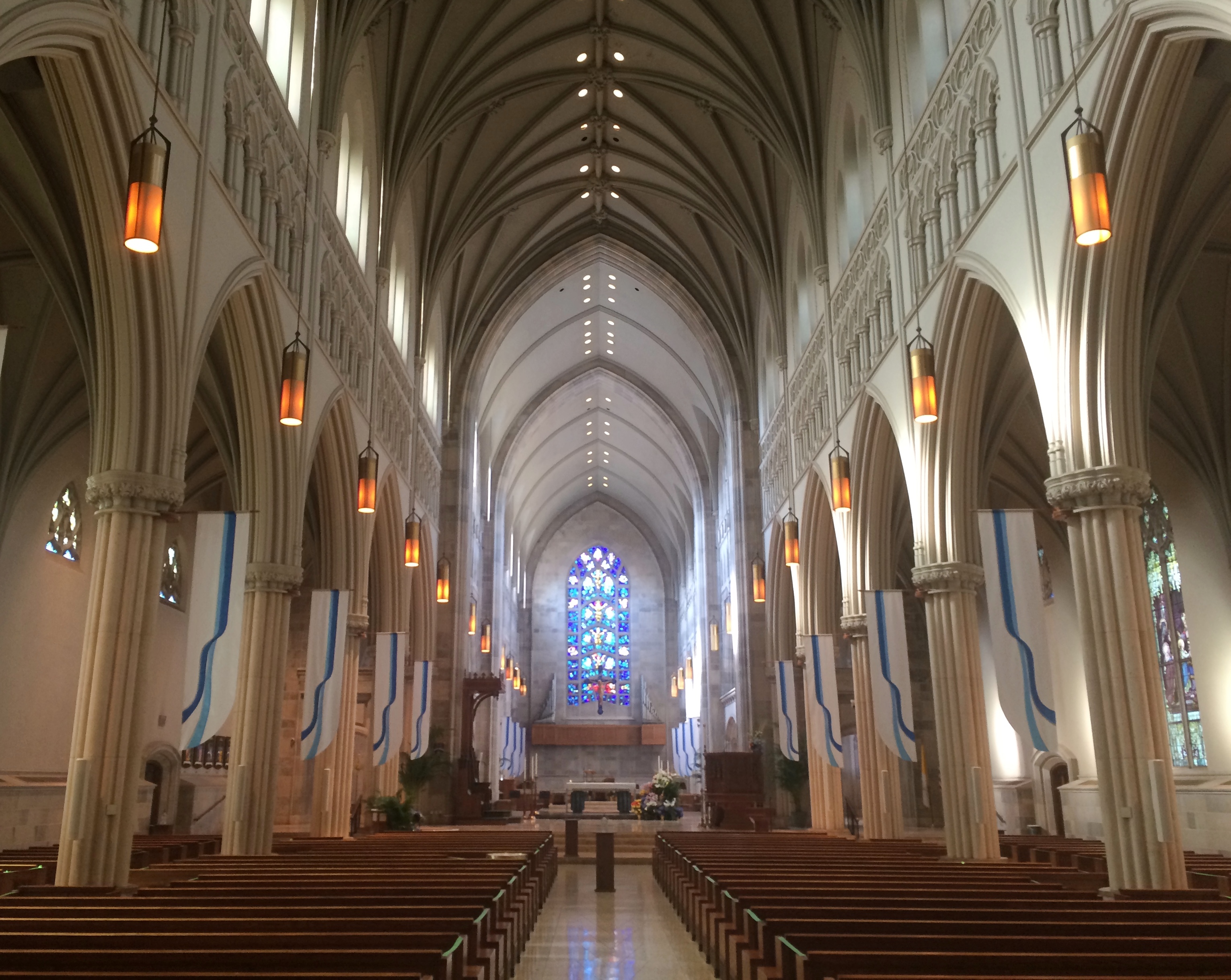

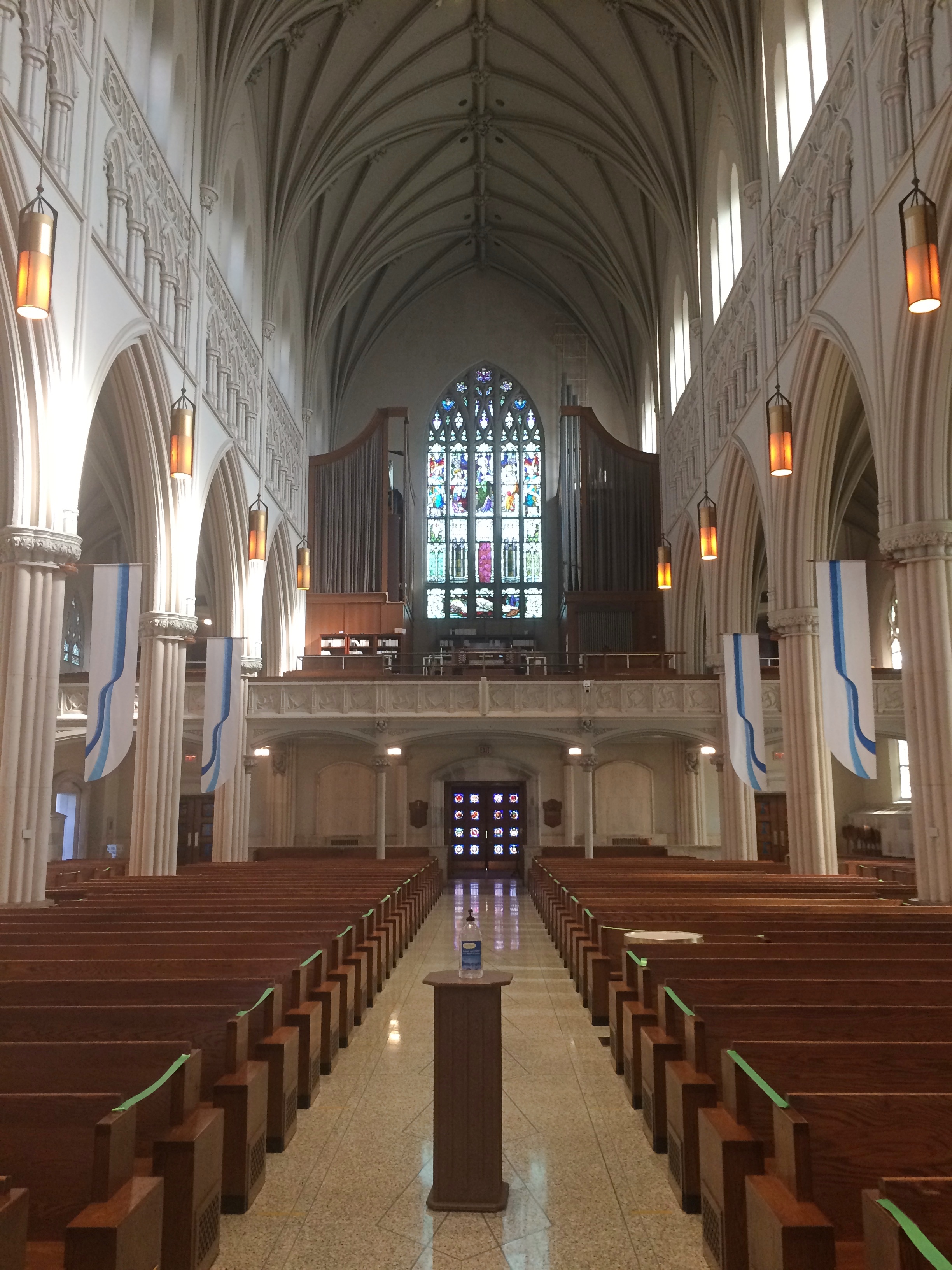
The original church was completed in 1866, but in 1912 the building nearly burned to the ground. Rebuilding gave it a Gothic style patterned after the Exeter Cathedral in Devon, though its vaulted ceiling isn’t as elaborate.
A few miles away is the National Shrine of Our Lady of the Snows, a complex featuring not only a large shrine, but also a church, Lordes-style grotto, gardens, conference center, gift shop, residence hall, restaurant and hotel.
The shrine as seen from the slope in front of it.
The design screams 1960 and sure enough, there’s a cornerstone with that date on it. Construction began in 1958 and finished that year, with a design by one Richard Cummings, a 1952 Washington University graduate who worked at the St. Louis firm of Maguolo & Quick at the time.
“It is easily the most Space Age-fabulous building in the region,” asserts Built St. Louis. “Seated at the bottom of a hill that forms a natural amphitheater, the main shrine of Our Lady of the Snows is a complex arrangement of curved forms and overlapping, intertwined spaces, a sort of High Googie architectural style.”
At the back of the shrine are some fine mosaics. Always good to find mosaics.
At the top of the slope is Millennium Spire, a work installed in 1998.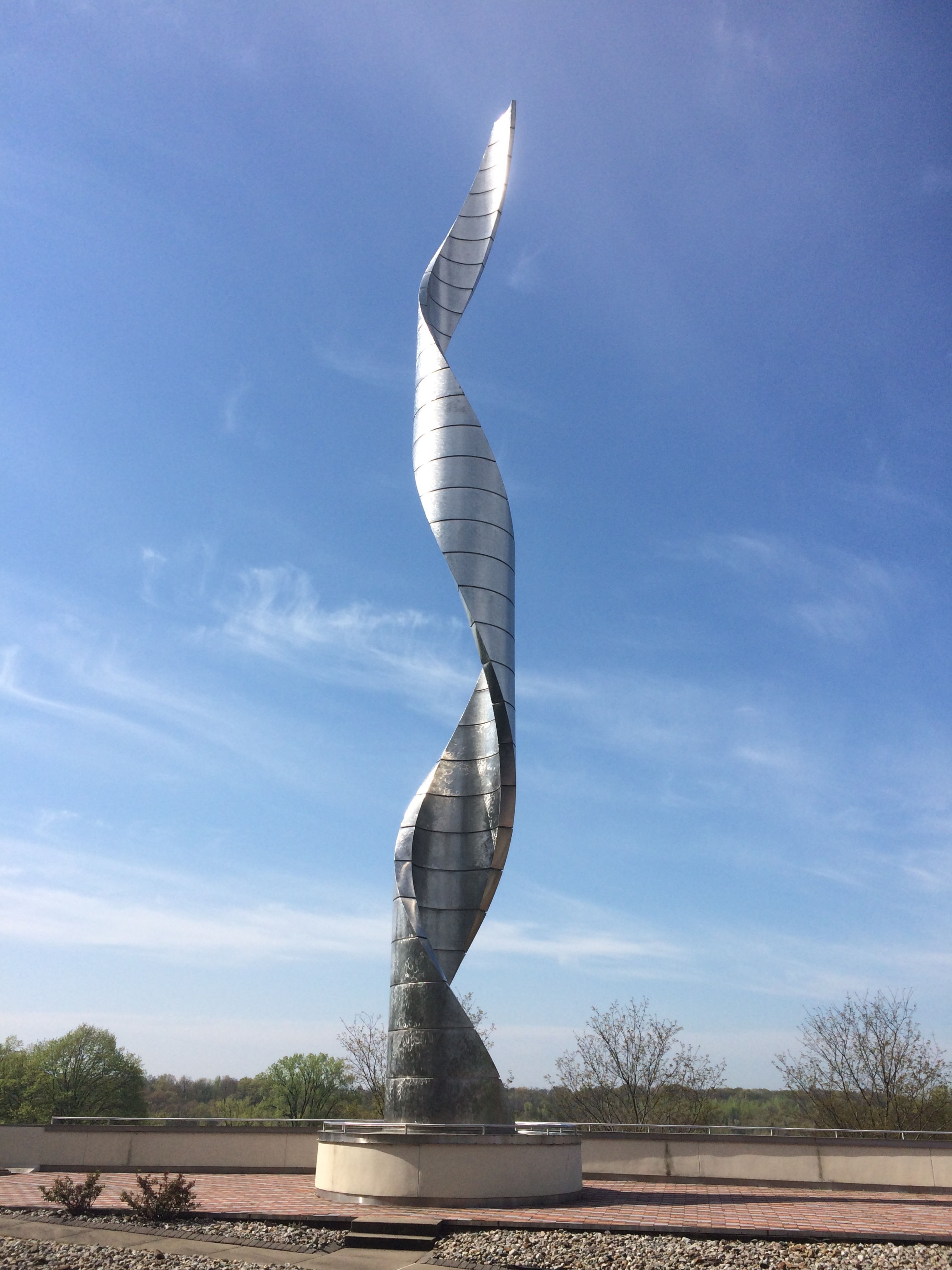
The shrine is a project of the Missionary Oblates of Mary Immaculate, whom I’ve run across before in San Antonio, location of their school of theology. No Space Age-fabulous structures there that I recall.
